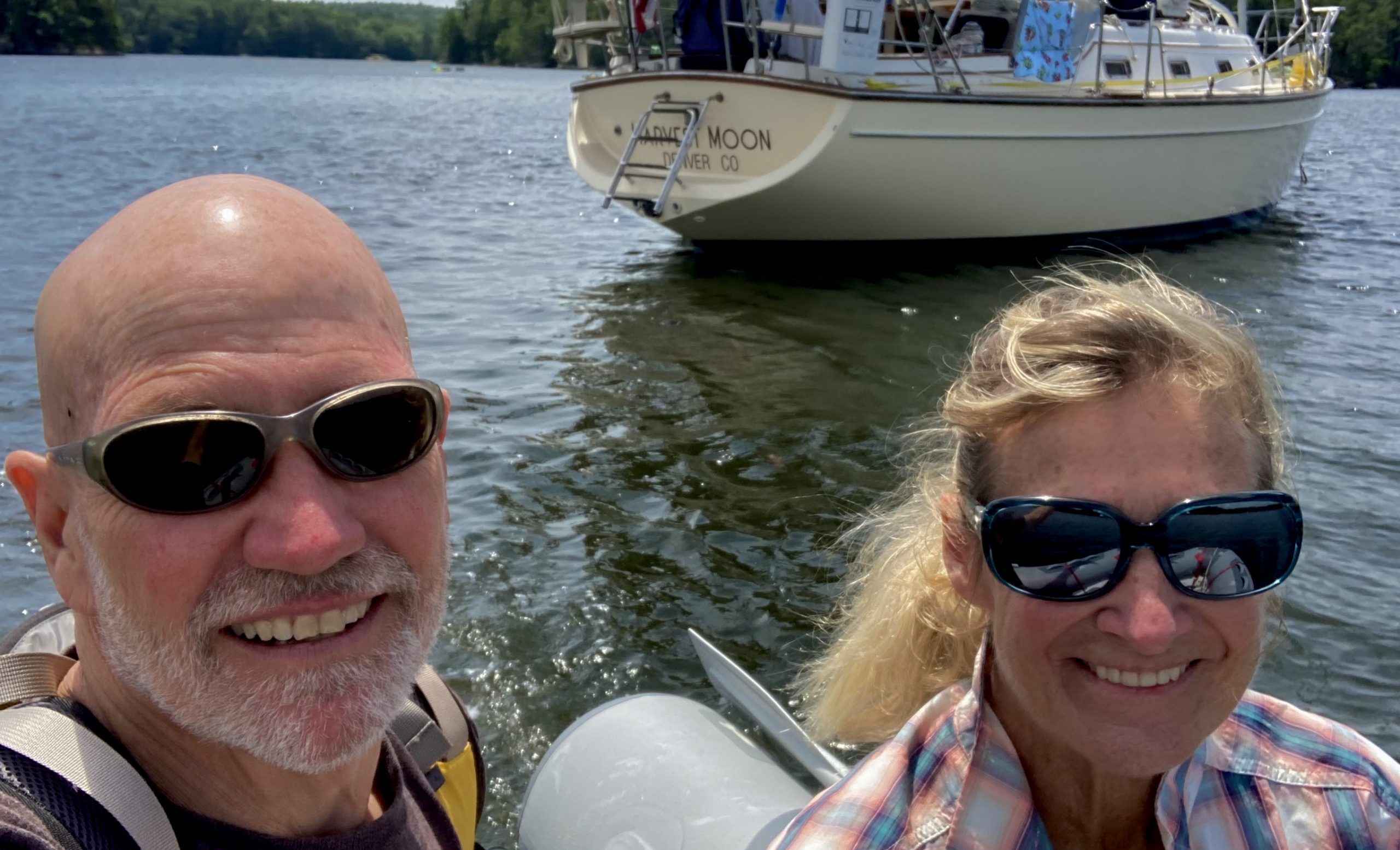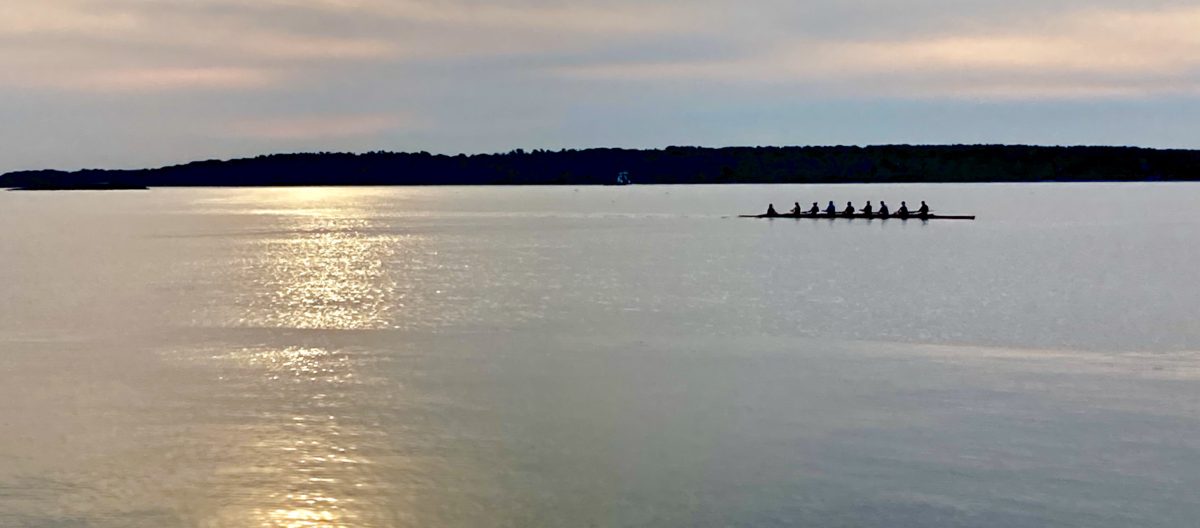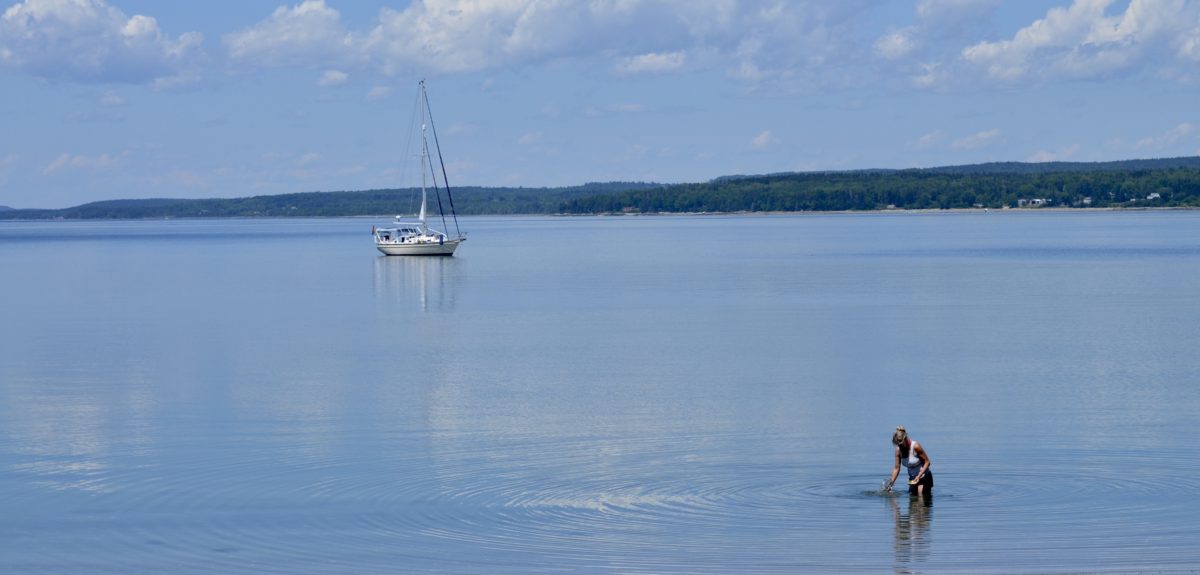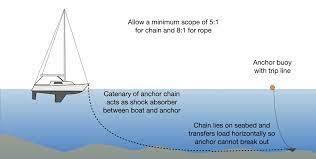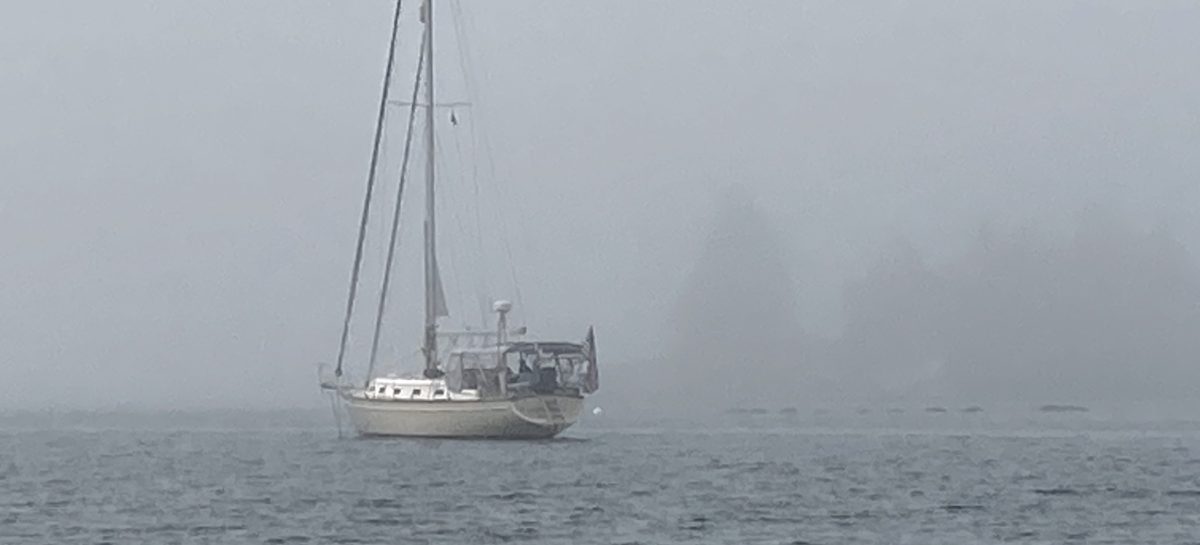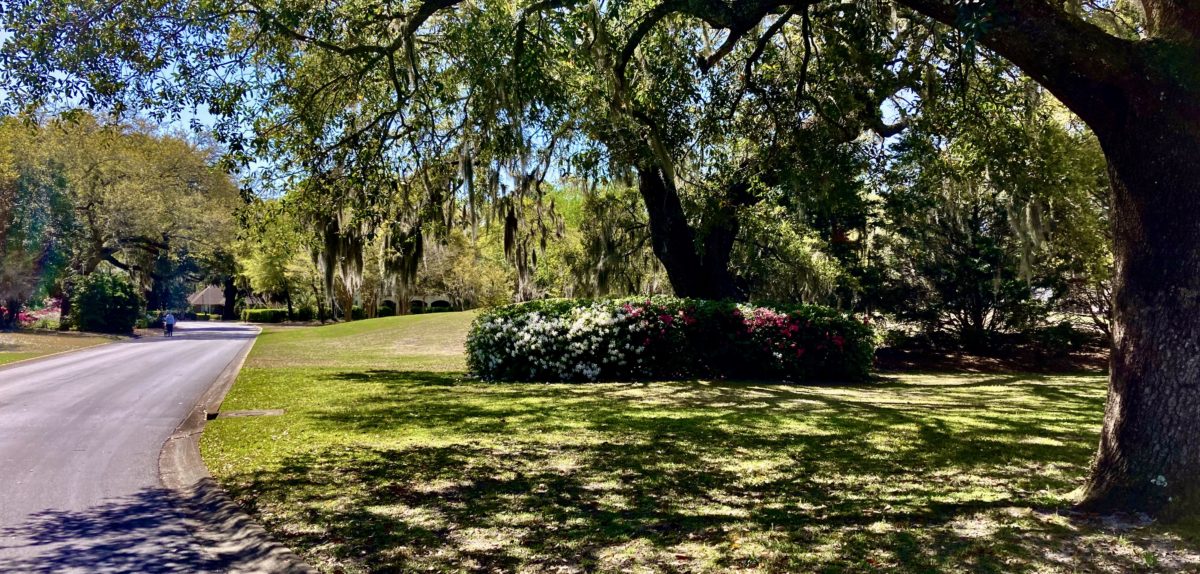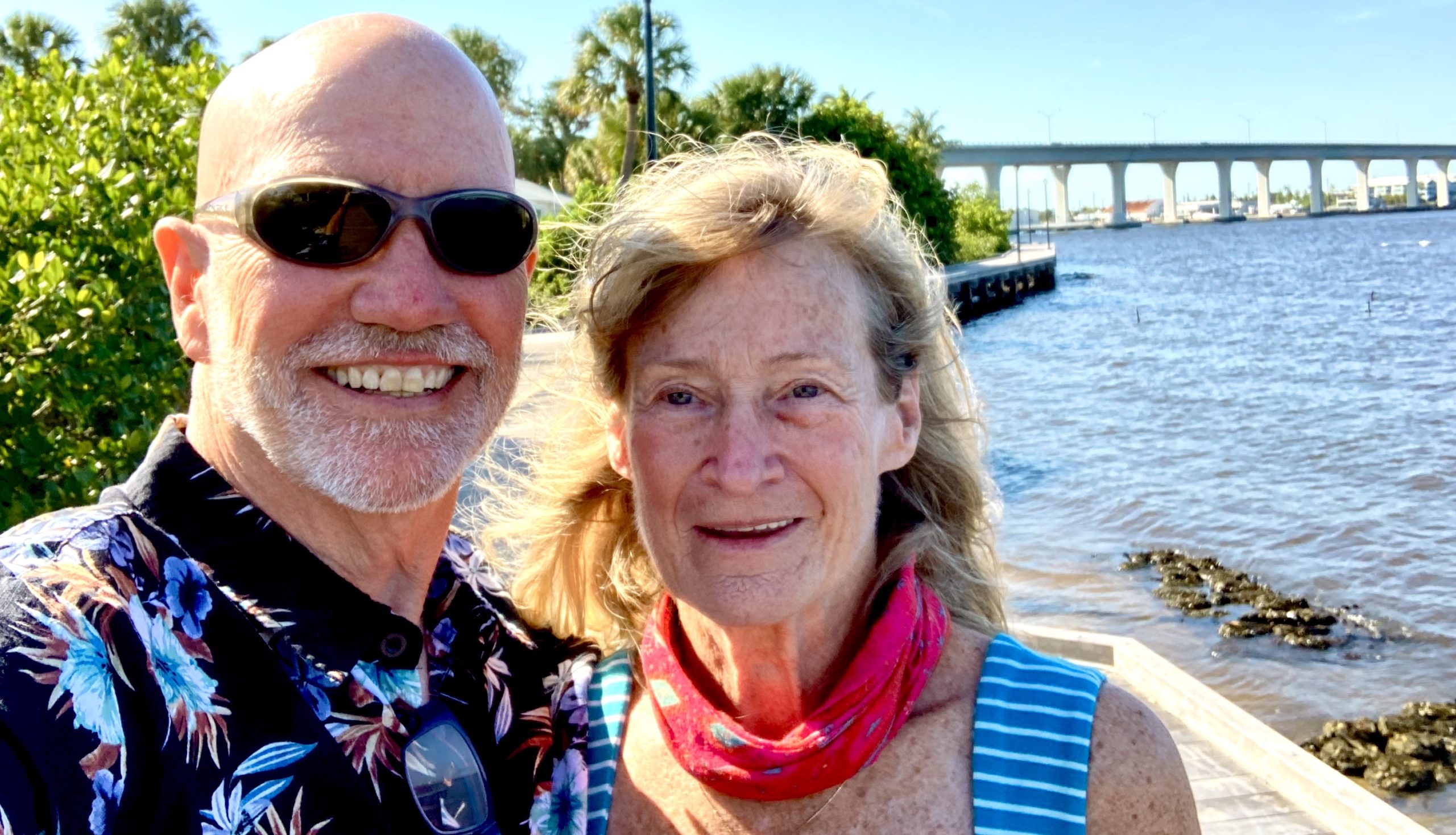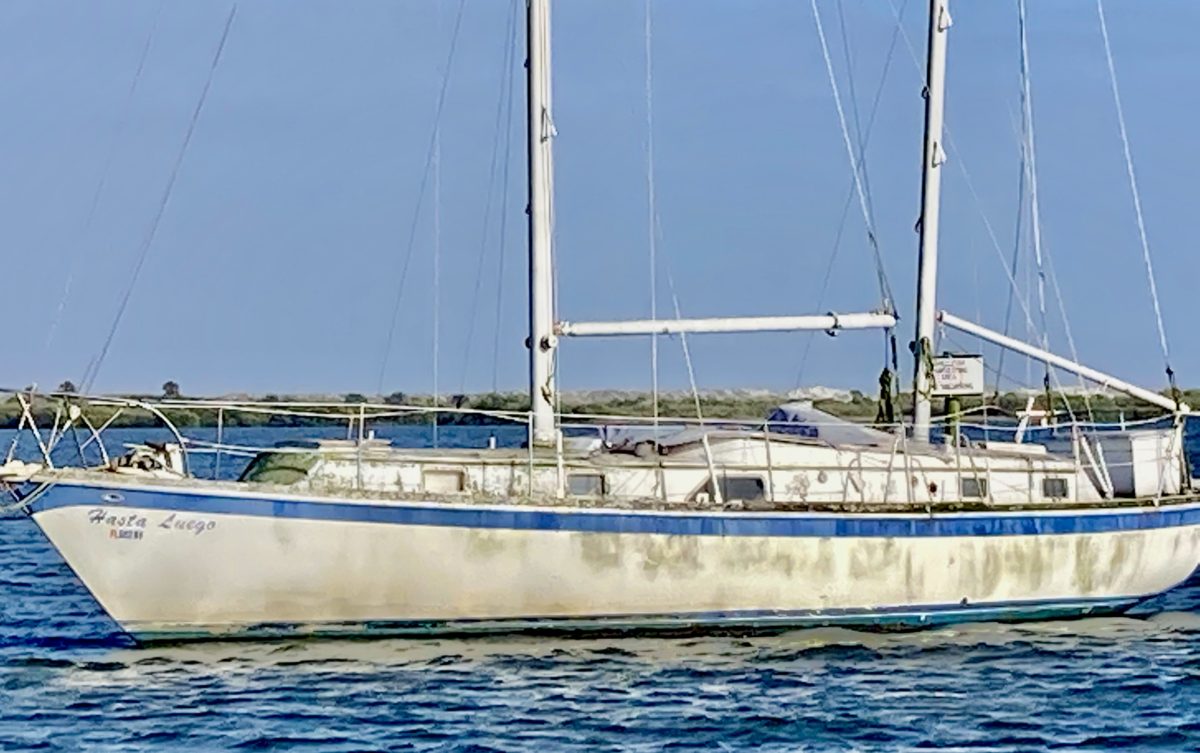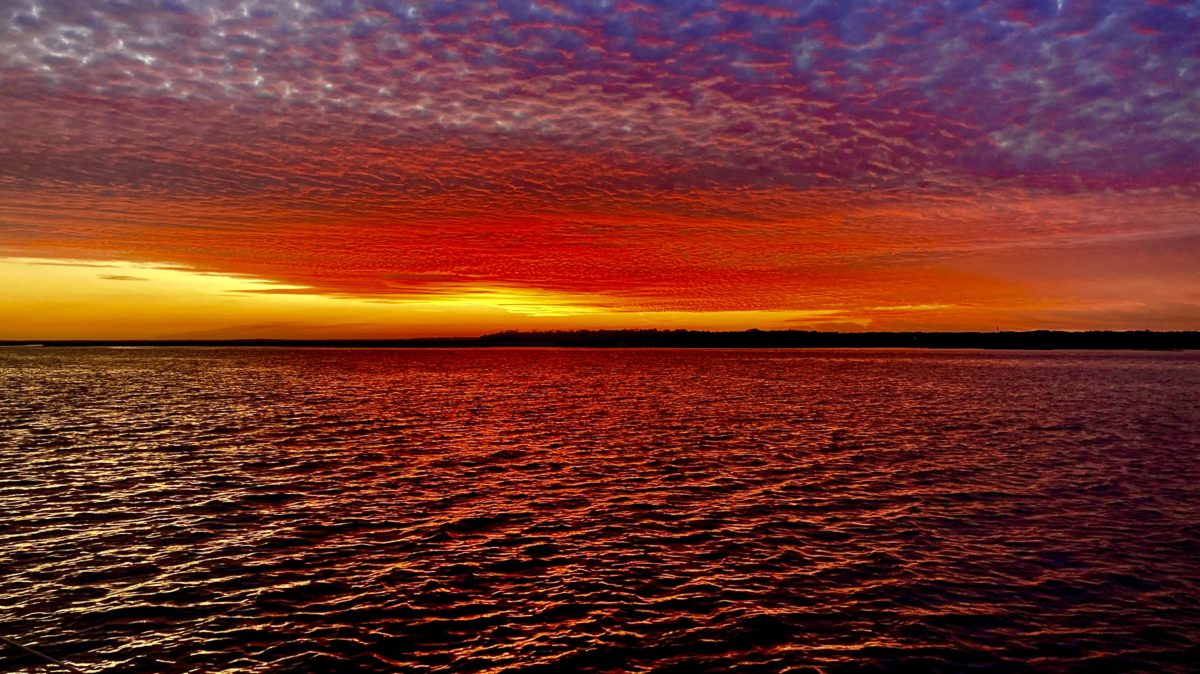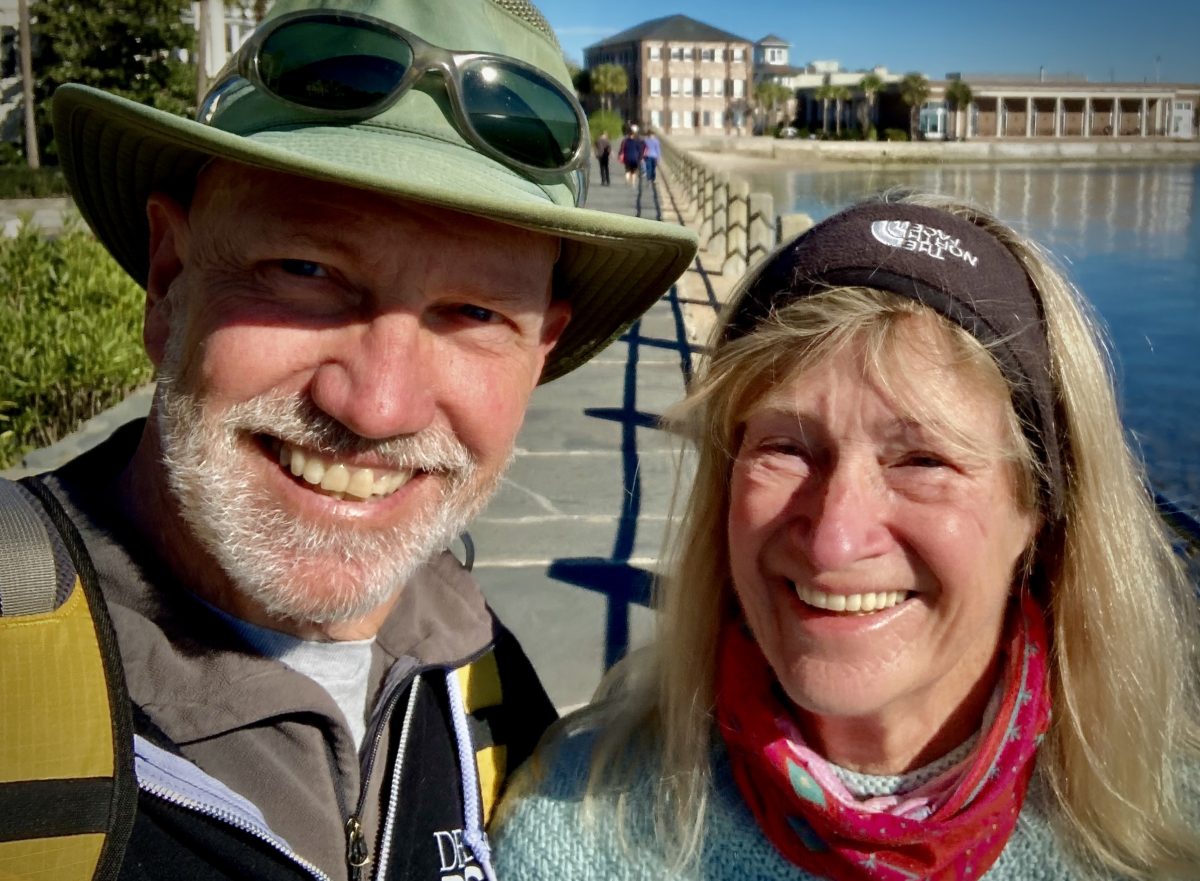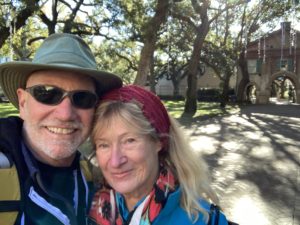When folks think about the romance of living on a boat, the anchor and the art of anchoring is rarely part of the fantasy. But for most liveaboards, anchoring is one of the most important aspects of their lifestyle.
How well I’m anchored determines how much I worry about my anchor dragging, and thus how well I sleep and how willing I am to take trips ashore. How well everyone around me is anchored determines the same things.
Entire books have been written about the art of anchoring—just do a google search and you’ll find many great resources. This post is meant as a summary, and a chance to toss my own $.02 into the kitty of ideas.
First, the hardware. Anchoring involves an anchor, a length of anchor rode, and your vessel attached to the other end of that rode. That’s the bit over which no controversy exists. But then…
The Anchor
Folks dive into near (or actual) zealotry when they insist that one anchor manufacturer is the absolute best, or one design is so much better than other designs, and I won’t add to that heated debate, other than to say that on Harvest Moon—our Island Packet 380 —we have a 55# Rocna 25 as our primary anchor, and a 15# Fortress FX23 as our secondary anchor. In addition, we have a smaller fortress that we use as a stern anchor in some situations, as well as yet another fortress that we keep in the bilge as an emergency anchor should we need an additional stern or bow anchor.
Note that the Rocna is our primary, but we have three Fortress anchors. It’s the Rocna that we depend on each night for security, and the Fortress anchors are chosen for their lighter weight and easier storage options. There are lots of manufacturers and a myriad of opinions on which designs the best anchor, and I would encourage every single potential buyer of anchors to immerse themself in the never ending debate in order to make the decision that will help them sleep best on a windy night.
Anchor buoy / trip line
I confess that I don’t always deploy a trip line, and I suspect I will regret this some day. The trip line is a line with one end attached to the appropriate spot on the anchor, and the other end attached to a floating buoy. It serves to mark the position of the anchor, and should the anchor snag on something on the seafloor, it serves as a potential way to free the snag. The reason that I rarely use it anymore is just the hassle of deploying it and retrieving it. As I say, I will likely regret this one day…
Rode
Regarding rode there is less debate, though certainly not none. Rode is the material that connects the anchor to the boat—the anchor line if you will. Some folks use rope rode, some use chain, and some use a combination of the two. The ratio between how much rode I deploy and how deep the water is is called “scope”. A 5:1 scope in 20’ of water means I have 100’ of chain out. (5:1 = 100:20)
- Chain is more expensive and heavier. If you have a light weekend bay sailer or racer, then chain is a disadvantage. If you have a heaving blue-water vessel, the weight is not as big an issue, and the extra weight seems insignificant when compared to the added holding ability of chain.
- Chain will hold better, generally speaking. I know some folks will argue about this, but chain is generally going to be stronger than the rope that would be used to replace it, and the additional weight of the chain between the anchor and the boat adds a catenary effect that helps keep direction of force on the anchor parallel to the sea floor, which is required in order for the anchor to work.
- Rope stretches, chain doesn’t. Stretch is a good thing when the winds pick up, because the action of waves in a big wind puts periodic “jerk” on the anchor rode. This jerking is referred to as snatch load. It exerts additional stress on every piece of the puzzle, and is the thing likely to break an anchor from its safe position “dug in” to the seabed, which is when the boat starts to drag. Rope will stretch as this snatch load is applied, and is therefore a valuable component in the equation. Folks who deploy a combination of chain and rope rode have the advantage of the mathematical catenary that the chain provides along with the stretch advantage of rope.
- The physics involved indicate that the heavier chain absolutely does keep the direction of force lower, but only up to a point. Peter Smith has an excellent comparison of chain vs rope here, and I have to say that the science he shares makes an excellent case for rope/chain combination and spending the weight saved on chain into a heavier anchor.
In the face of the science, I have to say that when we replace our aging primary chain, I’m unlikely to give up my 300’ of chain. It just makes me feel more secure.
How much rode we put out is determined by several factors”
- Weather. For an overnight anchorage with no chance of winds or weather, with water that’s 20’ deep, I’m fine with 4:1 or 5:1 scope. However, the longer we’re anchored in a spot, the higher the chance for wind and weather, so my scope comfort creeps upwards. When there’s a chance of weather, 5:1 is my minimum, and 8:1 is my preference.
- Depth. In deeper water, the catenary effect of my chain has more constant and positive effect, so in shallower water I might consider a higher scope ratio. However, the counter to this argument is that is shallower water, the angle between the boat and the anchor bedded into the seafloor is already low, so less rode is needed. If space to swing allows, I tend to put out more scope in shallower water, just because I can and I sleep better. The only time we ever drug was in shallow water in one of those situations where we were well protected and the weather was beautiful—check out that story here.
- Etiquette. If I’m all alone in an anchorage, or the anchorage is huge with very few boats, then I can put out as much chain as I want. This is not the norm, as we’re most likely going to be anchored with other boats around. The key to a happy anchorage is that everyone has the same scope out, and thus everyone swings around their anchor in a friendly fashion. If I’m coming into an anchorage where there are boats already anchored, I find the spot where I want to anchor, then I try to ask any nearby boats how much scope they have out, so that I can try and match their scope.
Snubber
Since we use all chain rode on Harvest Moon, we add a snubber at the end of the chain close to the boat. A snubber is a length of rope material that allows the all chain anchor setup to absorb the snatch loads in heavier seas and winds. In our case, I use about 10’ of rope with a clip on one end and a chain grabber on the other, pulling a foot or two of chain up and connecting the rope snubber to the chain at both ends of the snubber. The effect is that a couple feet of chain is hanging loosely between the two ends of the snubber line, and if the anchor rode pulls bar tight then the rope snubber is absorbing the snatch loads when they happen.
Bridle
We use a bridle whenever we anchor. It’s a chain grabber (like this one) with a shackle attaching rope to each side of it. I set a link of chain into the teeth of the chain grabber, then run the attached rope back to either side of the bow, attaching securely to the bow cleats on either side. This takes the anchor load and moves that loads to the bow cleats. It also lowers the point of attachment of the anchor to the boat down to the water line, effectively increasing scope. The even attachment at eight side of the bow also reduces the tendency of the bow to “hunt” in a stronger wind. (This “hunting” is the back and forth swinging of the boat in the wind. The bridle doesn’t stop it completely, but I do feel that it reduces the severity.)
Dropping the hook
Now for how to drop and set the anchor. I’ll start off with a nice image that comes from SafeSkipper.com — an excellent resource.

![]() First, take your time. Assess the anchorage and the chart. Think about wind and currents, both as they are when you’re anchoring and as they’re likely to be as they change. Our first few times anchoring, (okay probably our first few dozen times anchoring), this advice would not have made as much sense. I had to experience a whole host of anchoring situations in order to be able to think about them sensibly when approaching an anchorage. And honestly, Christine often gets frustrated at the time I take exploring and wandering in an anchorage, looking for exactly the right spot, and even more frustrated when I announce that I’m not happy with how we’re set, and I want us to pull the hook and drop it again differently.
First, take your time. Assess the anchorage and the chart. Think about wind and currents, both as they are when you’re anchoring and as they’re likely to be as they change. Our first few times anchoring, (okay probably our first few dozen times anchoring), this advice would not have made as much sense. I had to experience a whole host of anchoring situations in order to be able to think about them sensibly when approaching an anchorage. And honestly, Christine often gets frustrated at the time I take exploring and wandering in an anchorage, looking for exactly the right spot, and even more frustrated when I announce that I’m not happy with how we’re set, and I want us to pull the hook and drop it again differently.
The simple description of the process is to decide on the spot where you want to drop the anchor, then slowly approach that spot, headed into the wind or current. (If wind and current are not in alignment, then setting the anchor is going to be tricky, and it might take a couple tries to feel safe.) Continue to slow down as you approach your drop point. Ideally, the boat will slow to a complete stop at your drop point, you’ll drop the anchor to the bottom, and the wind will start pushing you backwards. You’ll let out rode as you drift backwards, trying to lay it out on the seafloor without piling it up. Once you have as much rode out as you want, then give the anchor a few minutes to settle into the bottom, then once the bow is pointed toward the anchor, use the engine in reverse to back down on it in order to dig it into the bottom and set it hard.
Practically speaking, here’s what this typically looks like with us. We use wireless headsets to talk to each other while anchoring, so this conversation is respectful and fun—no yelling or wild hand waving. There are those who prefer hand signals, which can work very well, but for us we like the conversation. Here’s what it might look like:
We’ve come in to the anchorage, and I’ve made a loop around it, testing out the depths. I’ve decided on the spot where I want to drop the hook, and describe our approach to Christine. Often I’ll actually put a mark on the screen where I think I’ll drop, so Christine has a spot to shoot for. I head up to the bow while Christine takes the helm.
Up at the bow I untie the anchor from the cleat that secures it, flip open the safety chain stopper, and lower the anchor to just above the water level, ready to deploy. (This is the kind of chain stopper we use.) I stand up and watch around me, often gauging distance to lobster pots or crab pots or other such gotchas that might be around. The closer we get to where we’ll drop the anchor, the more we slow.
Neil: “Go to neutral.”
Christine: “Going to neutral.”
Neil: “A little left.”
Christine: “Going a little left.”
A little time passes as we slow.
Neil: “Are we just about to that spot on the screen?”
Christine: “Almost. Maybe another half a minute.”
Neil: “Most excellent my love. Tell me when we get there.”
Christine: “Oh you’ll know when we get there darling.”
See how useful these headsets are? I won’t relate all the fun and endearing conversations that might (or might not) occur, but suffice it to say that it’s way better than arm waving and shouting. Now back to the action:
Christine: “Okay, we’re on the spot now.”
Neil: “Okay, put her in reverse to bring us to a dead stop.”
Christine: “Centering and locking the wheel, going to reverse. We’re stopped now, going to neutral.”
I step on the switch to lower the anchor, paying out enough chain to make sure I hit bottom, then slowly pay out more as I watch the chain to assure I’m not piling it up. The breeze has of course caught the bow so we are moving sideways with the wind, the anchor chain going out to one side. In a light wind it’s a slow process, but the headsets allow for fun banter. We just have a nice conversation.
Once I’ve got the amount of chain out I want, (recognized btw with the bright paint every 50’ with double zip ties at the 25’ marks between), then I close the safety chain stopper in order to avoid putting stress on the windlass, and wander back to the cockpit to get my phone. My intention is always to bring my phone with me when I go to anchor, and I always forget, so this is a normal part of the process.
You might wonder why I need my phone. It’s because I use my phone to set an anchor alarm. We meet new cruisers occasionally who don’t know what an anchor alarm is, and never set one. I NEVER go without an anchor alarm. In fact, if we leave the boat at anchor for a few days to visit friends, I set the anchor alarm on my iPad, leave it running on the boat, and monitor it remotely. I can’t imagine feeling secure at anchor without the ability to visually see on a screen how the boat has moved and is moving around the anchor.
BTW, I’ve used several different anchor alarms, and the one I like the best is the one that comes with AquaMaps. I absolutely love AquaMaps for a number of reasons, and their excellent anchor alarm is only one of those reasons.
Back to our anchoring scenario: I wander back up to the bow with my phone, and look at the chain to make sure that the wind has pushed us enough for the chain to stop us, turning us bow into the wind.
Neil: “Okay, looks like the bow is pointed toward the anchor and we’re ready to set. Go to reverse.”
Christine: “Wheel is centered and locked, going to reverse.”
Christine has the engine at about 1000 RPM in reverse—really just a fast idle. I watch and listen and feel as the chain straightens itself on the seafloor. I’m watching for the chain to start to tighten, I’m listening for the sounds that vibrate up through it as it does so, and feeling those vibrations with my bare feet on the bowsprit. As the chain comes tight, I want to make sure there’s no vibration indicating that the anchor is moving across the seafloor. Once I feel comfortable that the anchor is bedded, and the chain is tight:
Neil: “Go to 1500 RPM.”
Christine: “1500 RPM.”
I watch to make sure everything stays set. I set the anchor alarm, as this is the point where I know how far I am from the anchor and in which direction, as the chain is tight and pointed right at the anchor. In addition, I’ve picked out a couple points on shore to line up in my vision to assure that we’re not moving. If we’re set, then:
Neil: “Go to 2000 RPM.”
Christine: “2000 RPM. Our speed is zero.”
I continue to watch my points on shore, and when Christine’s instruments continue to show no movement, and my eyes confirm that with points on shore:
Neil: “We’re good. Shut ‘er down.”
Christine: “Shutting ‘er down.”
I walk back to the cockpit, we take off our headsets, exchange a high five, and smile at another accomplishment as a team. I take the snubber and bridle up to the bow, and set first the snubber, then just above that I set the bridle. I reset the safety chain stopper to make sure that in no case will the windlass ever have to carry load, then double check everything before heading back to the cockpit. This is also, btw, a time when I fiddle with stuff up on deck, making sure everything is secure and nothing looks odd.
Christine says I just need to walk around and touch everything. She’s right. In all seriousness, I’m probably somewhere on the scale…
There are many things we do as a couple on Harvest Moon that make me feel that we are a team. Things that are little accomplishments each day. Joint accomplishments. We each know where we fit and how we function as this team, and we compliment each other, building successes with each other, learning together.
Anchoring is one of those things that makes me feel wonderful as a part of this team.
